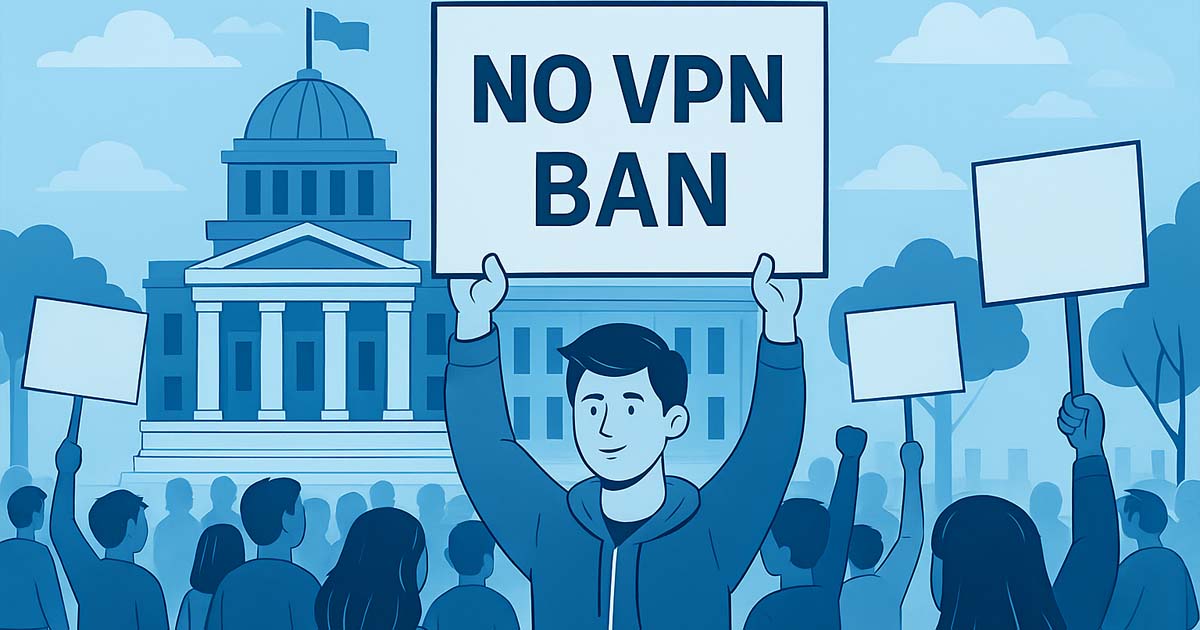In September 2025, a large-scale protest unfolded in the digital realm — **VPN Day of Action** (Defend VPNs Day). Activists, VPN providers, and digital-rights advocates united to send lawmakers a clear signal: do not interfere with privacy and anti-censorship technologies.
The goal was to show that VPNs are no longer just a “power-user tool,” but a key pillar of privacy protection, especially amid growing ID requirements and attempts to restrict access to content. Now that the event has passed, it is important to analyze what was achieved, what messages were sent, and what consequences may follow.
How VPN Day of Action took place and who joined
The organizer — **Fight for the Future**, a nonprofit focused on digital rights — announced the action on 15 September 2025 and invited participants worldwide.
On the action day (25 September 2025) users were encouraged to sign an open letter, and participants in the US were urged to call their representatives in Congress and the Senate.
Major VPN companies and associations partnered with the campaign: **VPN Trust Initiative**, **VPN Guild**, as well as the provider **Windscribe**, which notified its users directly.
Outcomes and reactions
Signatures and public resonance
During and immediately after the action, more than **15,000 signatures** were collected on a petition to lawmakers in Michigan and other jurisdictions, urging them to “leave VPNs alone.”
Industry media amplified the initiative: they covered the risks of the bills, published interviews with activists, and explained the importance of VPNs as a rights-protecting tool.
Signals to lawmakers and society
The action demonstrated that the VPN topic goes far beyond tech circles — it was embraced by activists, digital-rights groups, and mainstream media. Participants sought to show that attempts to restrict VPNs are perceived as an attack on free speech and privacy.
Effectiveness and limitations
Despite high engagement, no instant legislative change can be claimed. The Michigan bill is still under discussion, and its fate will be a key test of the campaign’s influence.
Limitations include the impossibility of covering every state or country, the risk that signatures and calls may be ignored by lawmakers, and the need for continued follow-up to keep attention on the issue after the “day.”
Key takeaways
- VPNs are now seen not as a niche tool but as a fundamental pillar of privacy protection in the digital age.
- Public mobilization matters: drawing lawmakers’ and media attention is a step — not the end goal.
- Such actions set a precedent: if VPN restrictions meet resistance now, it will be harder to introduce similar measures later.
- Impact requires continuity: monitoring bills, legal defense, and ongoing public dialogue.
• Fight for the Future — «Advisory: VPN Day of Action 9/25 – Don’t Ban VPNs!»
• Tom’s Guide — «VPN Day of Action: Providers and activists call on politicians to “leave VPNs alone”»
• Dataconomy — «Fight for the Future launches campaign to protect VPN access»
• TechRadar — «We want to make some noise — Advocates stepping in to defend VPNs»
• The Growth Shark — «Defend VPNs Day: September 25 and the Fight for Freedom»






